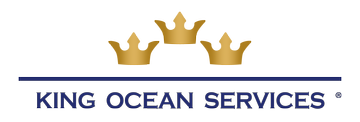The Advantage of a Continuous Budget is
Clients and results



![]()
We saved more than $1 million on our spend in the first year and just recently identified an opportunity to save about $10,000 every month on recurring expenses with PLANERGY.

Cristian Maradiaga
King Ocean
Download a free copy of "Preparing Your AP Department For The Future", to learn:
- How to transition from paper and excel to eInvoicing.
- How AP can improve relationships with your key suppliers.
- How to capture early payment discounts and avoid late payment penalties.
- How better management in AP can give you better flexibility for cash flow management.
Rolling Budget: Advantages and Disadvantages
- Written by Keith Murphy
- 12 min read

Knowing how to craft and stick to a budget is a keystone of business success. Since the middle of the twentieth century, static budgets were created by forecasting income and expenses for a given period of time (traditionally, the fiscal year), based on the previous year's performance, market conditions, and the estimates made by skilled team members from across an organization. These budgets were, as their name implies, fixed, and did not change over the course of the year; the challenge for the company was to adhere as closely as possible to the budget in order to hit the targets set during the budgeting process.
For many modern businesses, competing in a complex and ever-changing global economy makes an annual budget set in stone a little too constricting. These businesses are embracing rolling budgets, which bring greater flexibility but also a new set of challenges to the financial planning process.
What is a Rolling Budget?
In contrast to traditional static budgets, rolling budgets are continuous budgets. Updated monthly (or, more rarely, quarterly) rather than annually, these budgets expand incrementally as time passes. Rolling budgets look to the future while still drawing on the past, but with more of a short-term, contextual focus that allows for strategic adjustments as the fiscal year (or other accounting period) progresses.
Consider Company X, which uses an annual budgeting model but updates it with rolling budgets over time. So as a given month in the current year comes to an end—for example, September of 2021—stakeholders perform budget planning for the same month in the following year: September 2022.
These rolling forecasts are used to adjust the annual budget to incorporate insights gleaned from spend analysis and market conditions to provide a refreshed annual budget containing context unavailable in the original budget.
Companies use rolling budgets to:
- Achieve greater flexibility in their planning processes and decision-making;
- React to changing market conditions, business disruptions, and unforeseen opportunities with greater agility; and
- Perform more effective performance management by aligning (or realigning) spending and resource allocation at regular intervals (rather than waiting a full year) to match the business environment and improve competitive advantage.
Generally speaking, rolling budgets are ideal for swift-changing and unpredictable business environments, as well as improving accountability and control over financial planning or cash flow in specific areas that require regular monitoring.
Financial budgets for sales, overhead, and production are increasingly configured as rolling budgets by companies who want firm control over and visibility into their spend in those areas.
Generally speaking, rolling budgets are ideal for swift-changing and unpredictable business environments, as well as improving accountability and control over financial planning or cash flow in specific areas that require regular monitoring.
Advantages of Rolling Budgets
Compared to traditional budgets, rolling budgets provide a number of advantages, including:
- Greater agility and flexibility, since rolling budgets provide short-term context not available with a fixed budget set months ago.
- Reduced uncertainty and improved tactical utility for managing cash flow, taking corrective action to mitigate disruptions, or leverage fresh insights to take advantage of opportunities for growth, investment, or greater profitability.
- Strong support for zero-based budgeting (ZBB), wherein every expense and resource allocation must be justified for every new period, regardless of the previous period's allocations or approvals. Using ZBB on a monthly basis improves accountability while still permitting flexibility, allowing budget makers to keep costs under control and meet targets while still responding effectively to changes in the business environment.
- Better strategic and financial planning since decision-makers have access to, and the ability to adjust, short-term targets for the month and quarter as well as awareness of those for the full year (as impacted by changes to the monthly/quarterly budgets).
Disadvantages of Rolling Budgets
While they provide great flexibility and allow for timely changes to meet evolving market conditions or mitigate business disruptions, rolling budgets do come with a few caveats, including:
- Greater demand on staff, resources, and time. Fixed budgets are prepared once, usually in the fourth quarter, for the entire next year. Having to update rolling budgets monthly, quarterly, or both (along with the income statement and other financial documents) can be time consuming, increasing staff and resource costs. This is especially true for the procurement and accounts teams, who will have to either shoulder the entire budgeting process themselves or work with budget owners to make the necessary updates.
The more stakeholders are involved, the more time-consuming, expensive, and complex the process becomes. - Frustration/resistance to change/corporate culture issues. The extra work that comes with continuous budgeting methods can be demotivating without accompanying engagement by leadership to demonstrate its value to organizational growth and competitive strength.
Companies who are adopting rolling budgets for the first time may face significant resistance from staff who are accustomed to the workflows and scheduling that come with fixed budgets. For budget holders, constantly updated targets may become demotivating as they struggle to keep the strategic big picture in mind while dealing with the tactical realities of monthly and quarterly updates.
In these scenarios, additional training, combined with a collaborative approach to implementation and strong efforts by management to hear and meet the team's needs, will go a long way toward smoothing the transition. - In addition to additional staff-related expenses, rolling budgets may require the addition of new software tools to be optimally effective. Organizations still relying on Excel spreadsheets or manual, paper-based workflows may simply find themselves overwhelmed by the extra work and time demands that come with rolling budgets.
Implementing a best-in-class, cloud-based spend management and budgeting solution like Planergy can help mitigate these concerns. A centralized spend management solution generates immediate savings by eliminating the need for paper and manual workflows. In addition, it offers advanced digital tools such as robotic process automation, centralized data management, and powerful spend analytics. These help eliminate human error, increase accuracy, speed, and efficiency in all processes (including budgeting and forecasting), reducing expenses and frustration so your team can focus on building effective budgets that meet both your short-term and long-term business needs.
How to Prepare a Rolling Budget
Every business has its own specific budgeting needs, but you can create a general rolling budget by following a few simple steps.
- Work with all relevant stakeholders to prepare a budget for each month of a full year (e.g., January through December, or whatever months span your company's fiscal year).
- At month end, perform spend analysis and performance management, including budget variance analysis, to determine the difference between the estimates made during the budgeting process and the actual activity for the accounting period.
- Based on the results of your analyses, perform the necessary adjustments to create a new budget reflecting the events of the month coming to an end.
For example, if you're coming to the end of August and discover the cost of raw materials for one of your product lines has increased by 2.7% over the amount spent in August of last year, be sure to include this adjustment in your budget moving forward for the rest of the year, in addition to any other estimated changes you might have already made for next August based on business intelligence, internal process improvements, etc. - "Top off" the new budget to a full year by removing August of the current year and adding your forecasted budget for August of next year.
- Repeat monthly.
Is Your Business Ready for Rolling Budgets?
Whether you're looking ahead to next year or next period, your business needs a reliable budgeting process. Choosing between a traditional budget and a continuous budget will depend largely on your company's business processes and structure, as well as the stability of your market. But if you're prepared to dedicate the necessary resources, secure buy-in from your staff, and act swiftly to leverage the insights gleaned from implementing a rolling budget, you can enjoy greater competitive agility and smarter decision-making to help boost your company's performance and profitability.
What's your goal today?
2. Download our guide "Preparing Your AP Department For The Future"
Download a free copy of our guide to future proofing your accounts payable department. You'll also be subscribed to our email newsletter and notified about new articles or if have something interesting to share.
3. Learn best practices for purchasing, finance, and more
Browse hundreds of articles, containing an amazing number of useful tools, techniques, and best practices. Many readers tell us they would have paid consultants for the advice in these articles.
Related Posts
Source: https://planergy.com/blog/rolling-budget/
0 Response to "The Advantage of a Continuous Budget is"
Post a Comment